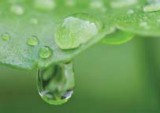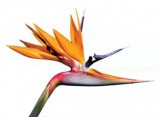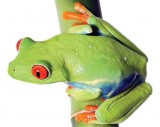Transform your classroom into a rainforest and encourage children to think globally using these art activities from Susan Ogier...
Exotic locations, such as the Amazonian rainforest, cannot help but spark children’s imaginations at all ages and stages. A jungle theme will provide an opportunity to investigate a visual feast of lush, green vegetation and extraordinary creatures of all shapes and sizes, and this can be a wonderful starting point for art projects. In turn, this will encourage children begin to appreciate the great beauty of such environments whilst considering their own impact on our fragile natural world.
Recreate the rainforest in your classroom…
 By including children in making changes to the classroom environment you will discover an exciting and motivating way to develop their interest in the rainforest theme. You might begin by researching aspects of tropical rainforests on the internet and in books (see Arthur Kelly’s article on the next page). Follow this up by organising a class visit to a botanical garden where children can gain first hand experience of the atmosphere, sights and smells of their surroundings which they can record through taking photographs and sketching.
By including children in making changes to the classroom environment you will discover an exciting and motivating way to develop their interest in the rainforest theme. You might begin by researching aspects of tropical rainforests on the internet and in books (see Arthur Kelly’s article on the next page). Follow this up by organising a class visit to a botanical garden where children can gain first hand experience of the atmosphere, sights and smells of their surroundings which they can record through taking photographs and sketching.
Once back at school, you might borrow as many living plants as you can to begin to create your installation. Encourage a recycling culture by covering cardboard tubes (from carpet or fabric rolls) with paper-mache to create a textured surface, which can then be painted to look like tree trunks. Shape chicken-wire, or garden net, into huge leaf shapes and introduce weaving techniques using fabric and coloured paper strips to make gigantic jungle plants. These will act as a shady canopy in your room.
Army camouflage nets from surplus retailers also make an excellent support for weaving or displaying items that the children have made. Teach the children the art of knotting and macramé to make ropes that dangle from your jungle. (Look at http://www.wikihow.com/Macrame for instructions). Play some watery sounds on a tape, or leave rainsticks for the children to use, as background music. Don’t forget to include a selection of photographs and sketches from the children’s research activities in the display in order to demonstrate to them, and to visitors to your jungle, that these preliminary activities are highly important and valued.
Explore your simian side…
Ask children to explore the plight of the Howler monkey by collecting visual material – such as information and photographs from magazines and the internet – and pasting these into their sketchbooks.
Study the expressions and facial features of the monkeys, particularly observing different shapes and lines that help to define the expressions, and make sketches of these using 2B or 4B pencils and charcoal.
The children might look in the mirror and compare human faces with those of the monkeys. What emotions do the children feel? What similarities and differences do they notice between their expressions and those of the monkeys?
Develop the sketches into designs for masks, perhaps by combining human and animal attributes. For mask-making techniques try the following website: http://www.allspecies.org/edu/maskmaking or take a look at the book Maskwork by Jennifer Foreman, (1999, Lutterworth Press) for more ideas.
Create fantastic flowers and plants…
 Begin by offering an inspiring array of plants and flowers and ask pupils to study them in detail, recording their observations in sketchbooks. (This might link well with a science topic on ‘growing’.) Encourage the children to invent their own imaginary flowering plant that might grow in the rainforest using a selection of materials, such as pencils, charcoal and chalk, soft or oil pastels and watercolours. What will be special about their flower? It might have the most beautiful scent or be the home of a rare insect, or have leaves with magical powers!
Begin by offering an inspiring array of plants and flowers and ask pupils to study them in detail, recording their observations in sketchbooks. (This might link well with a science topic on ‘growing’.) Encourage the children to invent their own imaginary flowering plant that might grow in the rainforest using a selection of materials, such as pencils, charcoal and chalk, soft or oil pastels and watercolours. What will be special about their flower? It might have the most beautiful scent or be the home of a rare insect, or have leaves with magical powers!
These ideas can then be recreated in three dimensional form using laminated paper. Ask the children to create a structure that resembles their imaginary plant by bending lengths of wire, which is then covered in tissue and taped or glued into place. Use card or foam pieces to create new shapes for petals and leaves before adding beads and other small, interesting found objects.
Apply PVA glue and tissue paper to add layers to the structures and, when this is dry, paint extra detail with poster paint mixed with PVA.
Plant the final sculptures in flowerpots filled with compost and exhibit them alongside the colourful drawings for a stunning display.
Use art to confront challenging topics…
Making art can often lead to a deeper understanding of the more difficult concepts that may be introduced through the curriculum. A good example being examining mankind’s destruction of the rainforest, how this has lead to the extinction of various species and the consequences we face because of this. The sensory and practical nature of art activity enables children to have space and time to think in a more considered way and to respond to challenges individually.
Finding out about already extinct creatures could be one way to begin considering this idea, and the children might create their own imaginary fossilised creature or plant by using recycled materials, tape and glue, to make a relief design of a skeleton on to a piece of cardboard.
Make sure the shapes are tightly secured so that the outlines are very clear. Cover this carefully with Art-Roc (plaster bandage) and rub sandcoloured paint over the top when this is dry. Create a display that resembles a museum to highlight the dangers of the rainforest’s destruction.
Experiment with rainforest colours…
 Challenge the children to mix as many shades and tones of greens and browns as possible using the ‘double primary system’ and to paint the results onto leaf shaped paper of their own designs. Use these colour experiments to add foliage to the classroom jungle environment or display. Encourage the children to make visual notes in their sketchbooks with some of these experiments: which colours did they mix together to create the tone? How might they make a darker or brighter version?
Challenge the children to mix as many shades and tones of greens and browns as possible using the ‘double primary system’ and to paint the results onto leaf shaped paper of their own designs. Use these colour experiments to add foliage to the classroom jungle environment or display. Encourage the children to make visual notes in their sketchbooks with some of these experiments: which colours did they mix together to create the tone? How might they make a darker or brighter version?
What is the double primary system?
For the best results you will need to use the double primary system. This consists of the three primary colours; red , yellow and blue - one ‘cold’ and one ‘hot’ tone of each:
Blues – Turquoise and Ultra marine (bright blue) (or Prussian blue for really dark tones)
Yellows – Lemon yellow and Cadmium yellow (bright yellow)
Reds – Crimson and Scarlet (bright red)
Combinations of these six primary colours will allow the children to successfully mix a vast range of colours and tones, which can then be used during any art project.
Creative responses to differentways of life…
Understanding the many ways in which other people who share our planet live their lives is an important aspect of developing children’s respect for fellow human beings. Enabling them to study and research a very different way of life from our own and make a response through art can encourage children to engage intellectually and emotionally.
The children might investigate the lives of the rainforest’s indigenous people and make items of food, medicine or clothing using clay, papermache or weaving techniques and place them into an installation.
How will the children comment on the impact of European explorers on the indigenous people’s lives? Perhaps the sculptures could be painted in a way that shows that many of them became sick and died after being in contact with Western visitors. Or children might place the objects in a way that shows how communities have been scattered and divided by timber and oil companies and the destruction of their land.
How to use Harry Potter to engage high-ability learners
Ace-Languages
